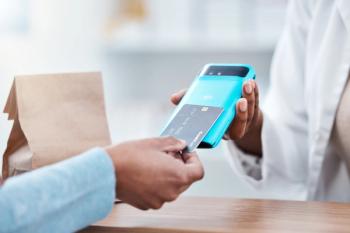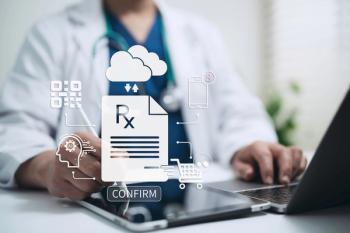
- Total Pharmacy® December 2023
- Volume 01
- Issue 05
Implementing Technological Workflow May Usher in New Era of Pharmacy

Placing telepharmacy at the forefront of outdated workflows could transform the traditional pharmacy setting.
Everyone knows the statistic: Pharmacists are considered the most accessible health care professional. Everyone also knows that pharmacists are experiencing more burnout than ever before. Although external factors such as the COVID-19 pandemic have contributed to this burnout, factors within the pharmacy, such as outdated workflows that incorporate manual practices that increase workload and cut into pharmacists’ valuable time, are also to blame. Incorporating telepharmacy models into these outdated pharmacy workflows may mitigate the harms associated with burnout and create a more efficient, safe, and lucrative pharmacy setting.
Although the concept of telehealth was pioneered as early as 1925, the practice firmly found its footing in 2020 with the onset of the COVID-19 pandemic. Increased accessibility to videotelephony platforms such as Zoom via laptops, phones, and tablets supported telehealth’s explosion in popularity and eased the transition to telehealth for health care providers and patients alike. It also promoted use of the telepharmacy model, defined as the provision of pharmaceutical care using telecommunications and information technologies to patients at a distance, in the traditional pharmacy setting.
In a session during the October 2023 Total Pharmacy Solutions Summit, Maimuna Bruce, PharmD, MBS, MS, manager of pharmacy advocacy and regulatory affairs at Outcomes, discussed the merit behind implementing the telepharmacy model into the standard pharmacy practice. In this model, pharmacists are not located on-site, but instead are remotely connected at a host location to pharmacy technicians at a remote dispensing location through video and audio technologies. Through this remote connection, pharmacists can provide supervision, verify prescriptions, and counsel patients without ever meeting face-to-face.
By transforming synchronous tasks into asynchronous tasks, the telepharmacy model helps pharmacies capitalize on productivity. It also provides relief to overloaded pharmacists by creating a more even distribution of work, thereby promoting safety and reducing stress.
“Updating the workflow with operations such as technology-assisted final verification [TAFV] creates time and opportunities for pharmacists to provide more value-added tasks,” Bruce said, citing the time-saving and revenue-boosting capabilities of TAFV, a component of the telepharmacy model. In an updated pharmacy workflow, TAFV replaces and streamlines the traditional fill process by sending images of the final prescription captured by pharmacy staff to pharmacists for final review and approval, eliminating the handling of physical prescriptions by pharmacists altogether.
Currently, only 40.3% of a pharmacist’s time is spent on value-added tasks like clinical activities. By implementing modernized technologies like TAFV, pharmacists are granted more flexibility to work on said tasks and expand revenue-generating pathways in their practice. These tasks include administering immunizations—one of the higher-reimbursed activities performed by pharmacists—and increasing patient-facing time by providing medication therapy management (MTM) services; those MTM services contributed to a $119 million payout to MTM providers in 2020. Performing tasks outside of the scope of the standard fill practice allows pharmacists to train at the top of their license.
“Pharmacists today are spending time on tasks that can be safely delegated to pharmacy personnel,” Bruce said. “If we are just dispensing medications at the community pharmacy level, we’re barely breaking even to pay our bills.”
The telepharmacy model further addresses and acts as a potential solution against growing pharmacy accessibility issues, specifically those experienced by individuals living in the many pharmacy deserts across the nation. In rural areas, a staggering 1.7 million residents live in pharmacy deserts, defined as living more than 10 miles from the nearest pharmacy, which turns the errand of picking up a prescription into one that is daunting, laborious, and potentially costly. Not only would increasing remote dispensing practices in locations such as hospitals, after-hours care, specialty clinics, and low-volume facilities make performing this errand more convenient, but it may also improve patient adherence and outcomes.
“Adherence is increased when there is dispensing at the site of care,” Bruce said. Using HIV as an example, she explained how introducing remote dispensing practices at a specialty HIV clinic could facilitate the obtaining of relevant medication and promote medication adherence, which especially important for the treatment of HIV, among affected patient populations. She noted further the potential benefits of incorporating telepharmacy into low-volume pharmacies that can’t financially support having a pharmacist on-site.
In updating pharmacy workflows to leverage technology by integrating telepharmacy with the traditional pharmacy practice and empowering pharmacists and pharmacy staff alike, Bruce emphasized the need for advocacy. Pharmacists must make their voices heard, and understand how to do so effectively, to enact meaningful change in the pharmacy setting. Drawing inspiration from other groups of health care providers who do a good job at self-advocating, she recommended that pharmacists stir up conversation among pharmacy associations and write to legislators to bring attention to less-than-ideal work conditions contributing to profession-wide burnout. “The changes that need to happen in pharmacy won’t occur by themselves,” Bruce said, noting the importance of collective action.
Articles in this issue
almost 2 years ago
NCPA Pharmacy Ownership Workshop Empowers, Educates, and Inspiresalmost 2 years ago
Understanding the Foundations of Pharmacy Financial Healthalmost 2 years ago
Opportunities Abound to Take Back Your PharmacyNewsletter
Pharmacy practice is always changing. Stay ahead of the curve with the Drug Topics newsletter and get the latest drug information, industry trends, and patient care tips.






































































































































